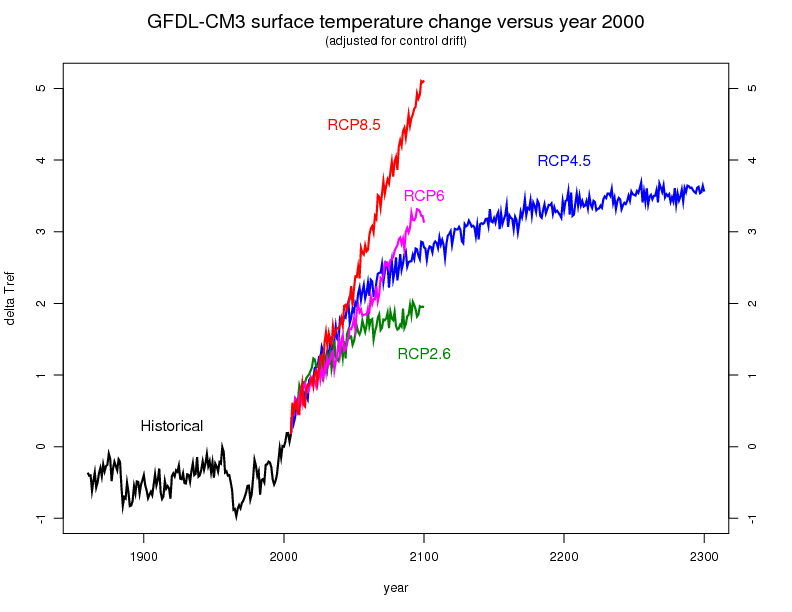Global Climate Model, CM3
GFDL’s successful model, CM2.1 (Delworth et al., 2006), was used as the starting point to develop the next-generation CM3 coupled model. The major development effort for CM3 focused on the atmosphere component. The update from the CM2.1 atmospheric component (AM2; GFDL GAMDT, 2004) to the new AM3 component in CM3 (Donner et al., 2011) was intended to allow us to address important questions such as:
- What are the roles of aerosol-cloud interactions, specifically indirect effects of aerosols?
- What are the dominant chemistry-climate interactions?
- What is the role of coupling to the stratosphere (and stratospheric chemistry)?
In particular, AM3 includes new treatments of deep and shallow cumulus convection, cloud droplet activation by aerosols (i.e., aerosol indirect effect), subgrid variability of stratiform vertical velocities for droplet activation, and atmospheric chemistry and aerosols driven by emissions with advective, convective, and turbulent transport.
AM3 employs a cubed-sphere implementation of a finite-volume dynamical core with horizontal resolution of approximately 200 km. The vertical resolution of AM3 ranges approximately from 70 m near the earth’s surface to 1-1.5 km near the tropopause and 3-4 km in much of the stratosphere, with the top model level at approximately 80 km (1 Pa).
The CM2.1 land component, LM2, was exchanged for a new land component, LM3 (Milly et al., in prep). LM3 improves the physical representations of the flow of heat and water through the land when compared to LM2. In addition, a dynamic vegetation component was added to the land model.
The CM2.1 sea ice (SIS) and ocean (MOM) components remain essentially unchanged in CM3 (Griffies et al., 2011).
CMIP Experiments with CM3
A number of integrations of CM3 were performed following the CMIP5 protocol (Taylor et al. 2011), including all proposed “Core” simulations and most of the “Tier 1” and “Tier 2” simulations. These runs include an 1860 control, a 5-member historical ensemble, and 4 future scenarios (RCP 2.6, 4.5, 6.0 and 8.5). Detection and attribution simulations were conducted to examine the model’s response to subsets of historical forcings (well-mixed greenhouse gases and ozone only, natural forcings only, aerosol forcing only, and anthropogenic forcings only).
In addition, several idealized integrations were conducted to study various aspects of the model response to forcings (e.g., 1%/yr CO2, instantaneous 4xCO2). Finally a series of atmosphere-only (AMIP) simulations were performed with prescribed sea surface temperatures (5-member historical ensemble, 4xCO2, SST+4K, CFMIP simulations, etc.).
To obtain CMIP5 CM3 data, click here.

Global mean annual surface temperature changes (in degrees C) simulated by the GFDL CM3 coupled climate model for historical conditions (1860-2005) and four projected future “Representative Concentration Pathway” (RCP) scenarios. Named for the approximate radiative forcing in year 2100, the RCP scenarios include a low-forcing scenario (RCP2.6), two moderate-forcing stabilization scenarios (RCP4.5 and RCP6), and a high-forcing scenario (RCP8.5).


